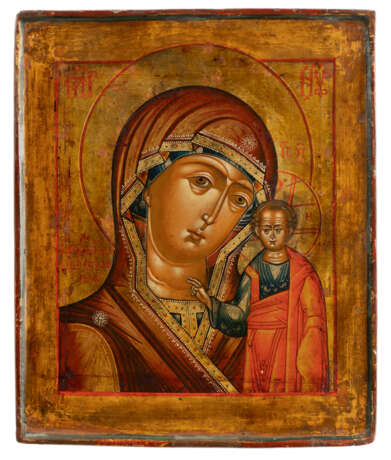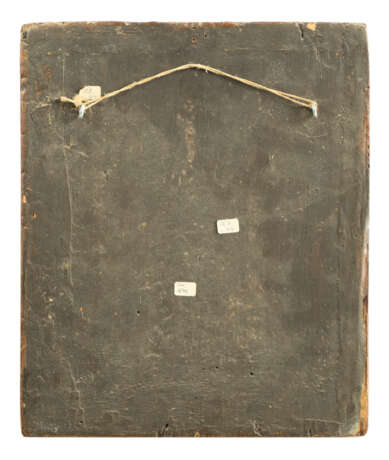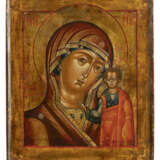ID 173753
Lot 169 | Gottesmutter von Kasan
Estimate value
CHF 500 – 700
Russische Ikone, Tempera / Holz, 19. Jahrhundert
31 x 26 cm
Der Überlieferung nach wurde die Ikone am 8. Juli 1579 in einem bei einer Feuersbrunst am 28. Juni niedergebrannten Haus in der Stadt Kazan gefunden. Einem neunjährigen Mädchen namens Matrona erschien die Gottesmutter dreimal im Traum und befahl ihr, dem Erzbischof Jeremija und dem Statthalter zu sagen, daß sie die Ikone aus der Asche des abgebrannten Hauses bergen sollen. Niemand schenkte ihr Glauben, bis am 8. Juli die in einen alten Stoff gewickelte Ikone unter dem Ofen ausgegraben wurde, wo sie wahrscheinlich während der bis 1555 dauernden Tartarenherrschaft versteckt worden war. In einer feierlichen Prozession wurde die Ikone zuerst in die Nikolaus von Tula-Kirche gebracht und anschließend zur Verkündigungs-Kathedrale, wo sie zahlreiche Blinde heilte. Deshalb wird die Kazanskaja bei Augenleiden angerufen. Noch im selben Jahr wurde auf Befehl des Zaren Ivan IV. von der wundertätigen Ikone eine Kopie angefertigt und nach Moskau gebracht. Am Auffindungsort ließ er ein Nonnenkloster erichten, in dessen 1595 geweihter Kirche die Ikone ihren Platz erhielt. Die Befreiung Moskaus von den Polen am 22. Oktober 1612 wurde auf die Hilfe der Gottesmutter von Kazan zurückgeführt. 1721 ließ Peter der Große eine Kopie der Kazanskaja, die zur Schutzpatronin der Romanovs geworden war, nach St. Petersburg bringen. Dort wurde für die Ikone 1811 die monumentale Kazaner Kathedrale errichtet. Der Sieg in der Schlacht bei Borodino gegen Napoleon wurde ebenfalls auf den Beistand der Gottesmutter von Kazan zurückgeführt. Das Gnadenbild in Kazan wurde am 29. Juni 1904 wegen des kostbaren Oklads geraubt und vom Dieb verbrannt. Da die Kazanskaja auch Schutzherrin des russischen Heeres war, ist sie -neben der Vladimirskaja- der in den letzten Jahrhunderten am meisten gemalte Gottesmuttertypus Russlands. Provenienz: 1979 Elsa Bloch-Diener, Bern; Privatsammlung Bern
| Auction house category: | Religious folk art |
|---|
| Auction house category: | Religious folk art |
|---|
| Address of auction |
Galerie Moenius AG Belsptrasse 3 und 6 3074 Muri Switzerland | |
|---|---|---|
| Preview |
| |
| Phone | +41 (0) 31 832 47 53 | |
| Fax | +41 31 8324765 | |
| Buyer Premium | 27.84% | |
| Conditions of purchase | Conditions of purchase |





